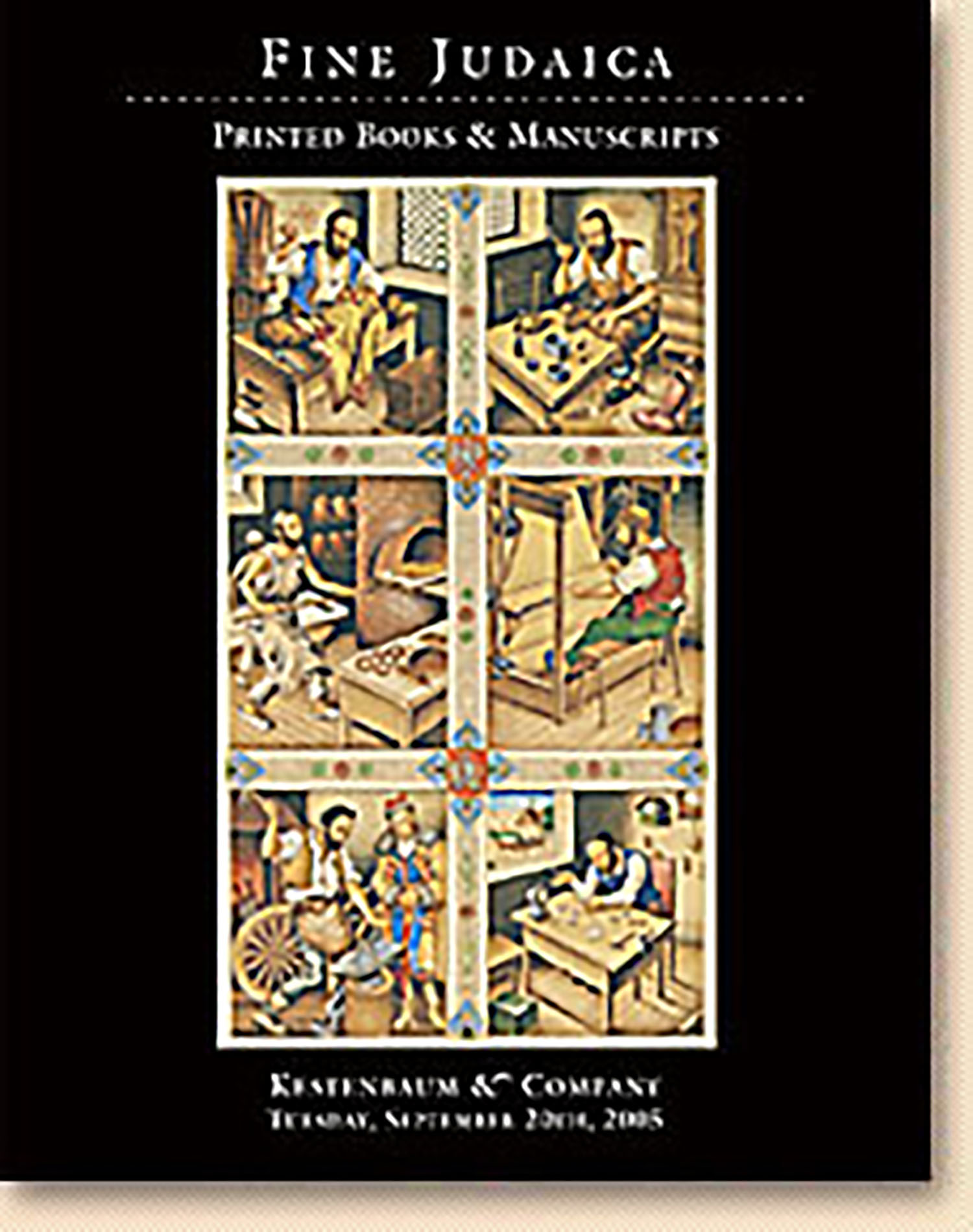Constitution und Neben-Gesetze der Gesellschaft fuer krankenbesuch und Todtenbestattung. pp. 28. * Bound With: Constitution and By-Laws for the Society of the Visitation of the Sick and Burial of the Dead. pp. 21.

AUCTION 30 |
Tuesday, September 20th,
2005 at 1:00
Fine Judaica: Books and Manuscripts
Lot 40
(AMERICAN JUDAICA)
Constitution und Neben-Gesetze der Gesellschaft fuer krankenbesuch und Todtenbestattung. pp. 28. * Bound With: Constitution and By-Laws for the Society of the Visitation of the Sick and Burial of the Dead. pp. 21.
Philadelphia: Rudolph Stein 1856
Est: $6,000 - $8,000
PRICE REALIZED $9,000
TWO CONSTITUTIONS FOR AN UNKNOWN BURIAL SOCIETY. (Unknown to Singerman)
This unknown Philadelphia Sick and Burial Society was incorporated in 1851 by German immigrants. The society was not connected to any particular Congregation and it membership was apparently composed of itinerant peddlers who used Philadelphia as a base for peddling in rural areas. The by-laws indicate that sick privileges can be claimed if the member is within 150 miles of the Philadelphia County limits, and that the Society will pay for a deceased member to be transported back to the city if he dies within 150 miles of the city. The Society would also pay for the transport of those who died between 150 and 300 miles outside the city, but only if they were within ten miles “of a navigable river, canal or railroad, on which the corpse can be conveniently transported hither” (p. 12). Members could only remain in good standing if they married a Jew and if they circumcised their children (p. 18). “Any member who feigns himself sick without being so, or who continues to draw relief after his recovery … or is guilty of any criminal offense or a gross immorality” was subject to suspension or expulsion. All members were obligated to attend the funeral of a fellow member and wear the badge of the Society - violators were to be fined fifty cents.
The present copies of the German and English Editions were bound together and retain the contemporary wrappers. Each edition has its own title page and collation. The German edition concludes with a list of members and officers.
